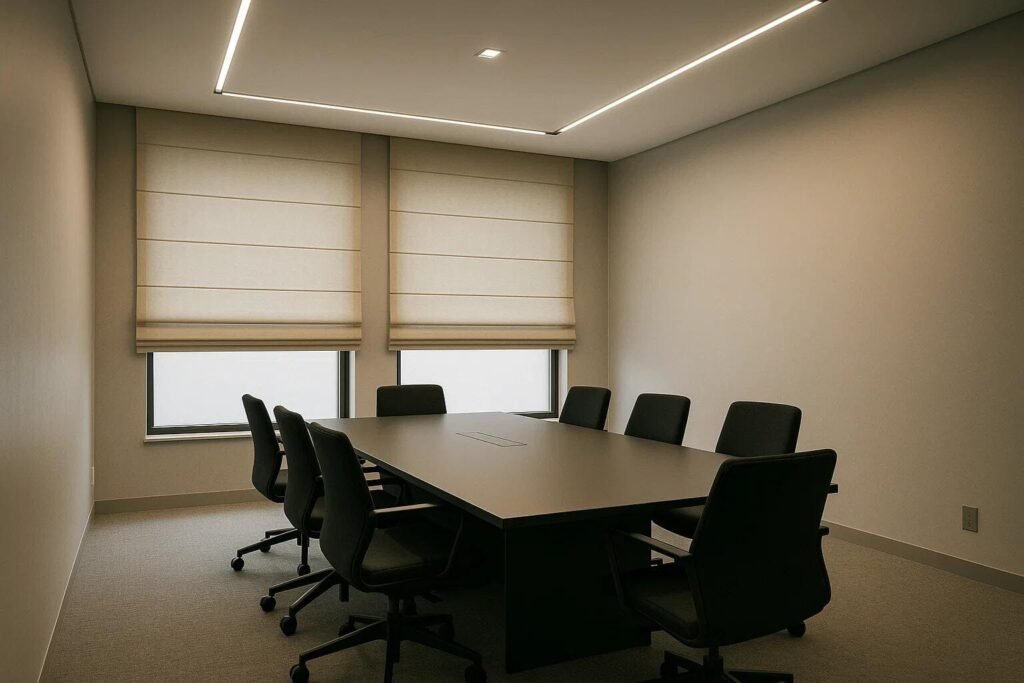You are specifying Roman blinds for a project, and the question of mounting comes up. Inside or outside the recess? It seems like a simple aesthetic choice[^1], but getting it wrong can ruin the entire look and even compromise the blind's function.
The best choice depends on more than just style. An inside mount offers a clean, built-in aesthetic but requires a deep enough window frame. An outside mount provides better light control[^2] and works on any window, but can cover beautiful trim. Let the window itself guide your decision.
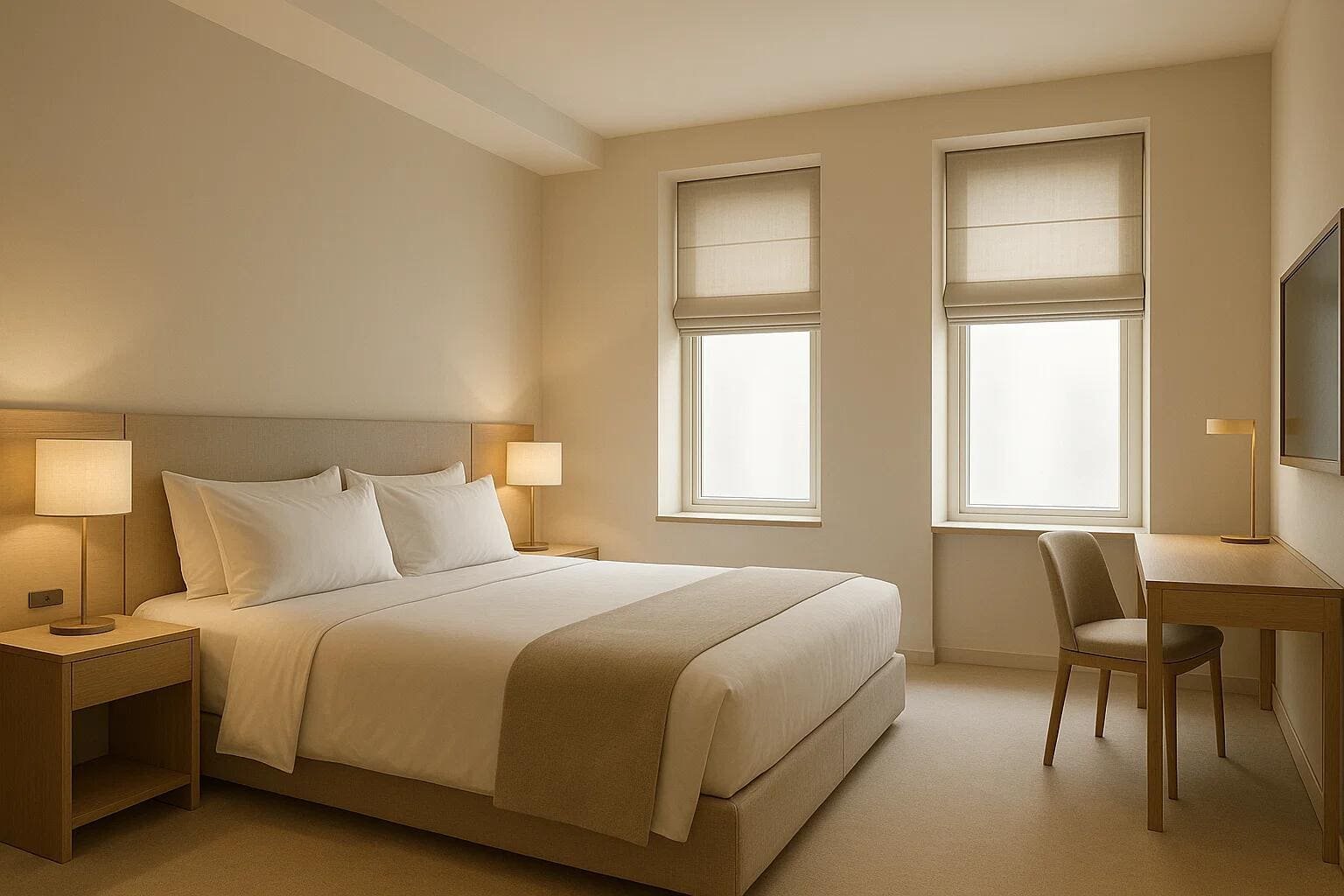
I talk with project buyers like Emma about this all the time. She's balancing client demands for elegance[^3] with the practical realities of construction. People often have a strong visual preference, but I always start the conversation with the window frame[^4] itself. The depth[^5] and condition of your window recess are the most important factors. Let’s break down how to make the right call.
What’s the Difference Between an Inside and Outside Mount?
You've seen both styles in design magazines, but the terminology can get confusing when you're filling out a spec sheet. Misunderstanding the terms can lead to ordering blinds that simply don't fit.
An inside mount[^6] fits the Roman blind neatly within the natural opening of the window frame, creating a clean, contained look. An outside mount[^7] places the blind on the wall above and around the frame, covering the entire window like a piece of art.

I always use a simple visual explanation. With an inside mount, the blind is flush with your wall, showcasing the depth of your window and the trim around it. It’s a very integrated, architectural look. With an outside mount, the blind is installed on the face of the wall and stands proud of the window. This makes the blind itself a more prominent feature. Many people prefer the tidiness of an inside mount, but as we'll see, it’s not always possible. The decision a lot of people think is purely about aesthetics is often made for them by the window's construction.
Which Option Looks More Elegant and Stylish?
Your project has a specific design language, and the window treatment must complement it. You're worried an outside mount might look bulky or an inside mount might feel too plain.
While elegance is subjective, an inside mount delivers a clean, sharp, and modern feel by recessing the blind. An outside mount, which allows the soft fabric to frame the window, often creates a cozier, more traditional, or dramatic statement.
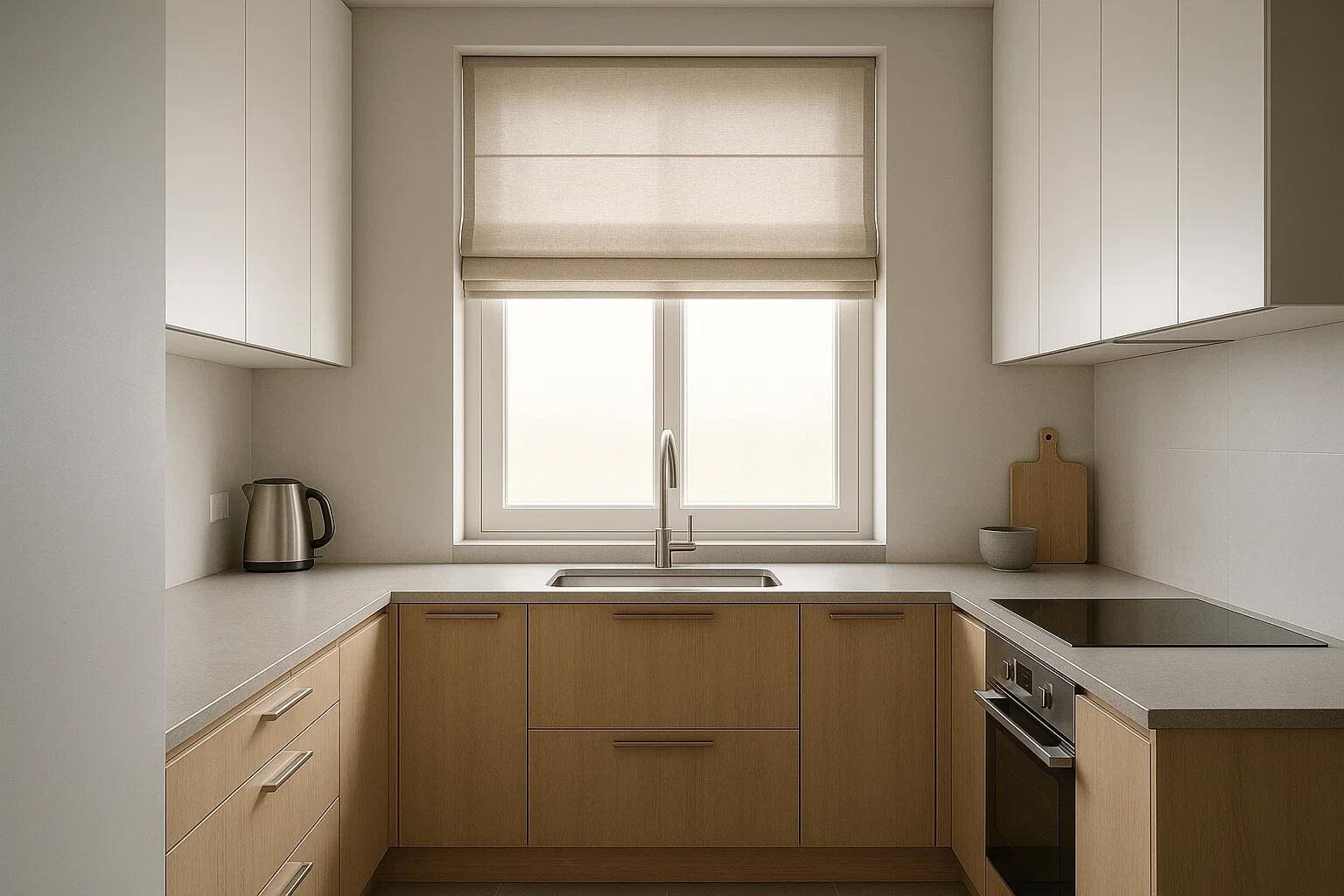
The style choice really depends on the room's character. For a compact urban office or a minimalist kitchen[^8], an inside mount is almost always the right answer. It keeps the lines clean and preserves the architectural integrity of the window. In spaces designed for comfort and luxury, like hotel suites or formal living rooms, an outside mount can add a sense of grandeur. The soft, cascading folds of the Roman blind become a decorative feature. An outside mount can also make a window appear larger than it is, which is a classic interior design trick. The key is to match the mount to the overall feeling you want to create.
How Do They Compare on Light Control and Insulation?
A beautiful blind that lets in streams of unwanted light is a design failure. Your client has clear goals for privacy and energy efficiency, and your specification needs to meet them.
An outside mount provides significantly better light control and insulation[^9]. Because it overlaps the window frame[^4] on all sides, it creates a more complete barrier against light leakage and drafts. An inside mount will always have slight light gaps[^10] around the edges.

This is one of the most critical functional differences. With an inside mount, you will get a "halo" of light around the edges of the shade because there has to be a small deduction in width for the blind to operate freely. For most living areas, this is perfectly acceptable. But for a bedroom, hotel room, or media room where room-darkening is the goal, those light gaps are a problem. An outside mount solves this by covering those gaps completely. This overlap also creates a pocket of trapped air, which improves thermal insulation and can contribute to energy savings—a key factor for commercial projects[^11]. If performance is your top priority, an outside mount is functionally superior.
Where Should I Use Each Mount Type?
You're working on a project with multiple room types, from offices to bedrooms[^12]. You know that the needs of a kitchen are very different from a conference room, and you need to specify accordingly.
Use an inside mount for spaces like kitchens and bathrooms to keep the sill clear and the fabric away from water. Use an outside mount in bedrooms and media rooms to achieve maximum light blockage. An outside mount is also the go-to solution for any window with a shallow or obstructed frame.
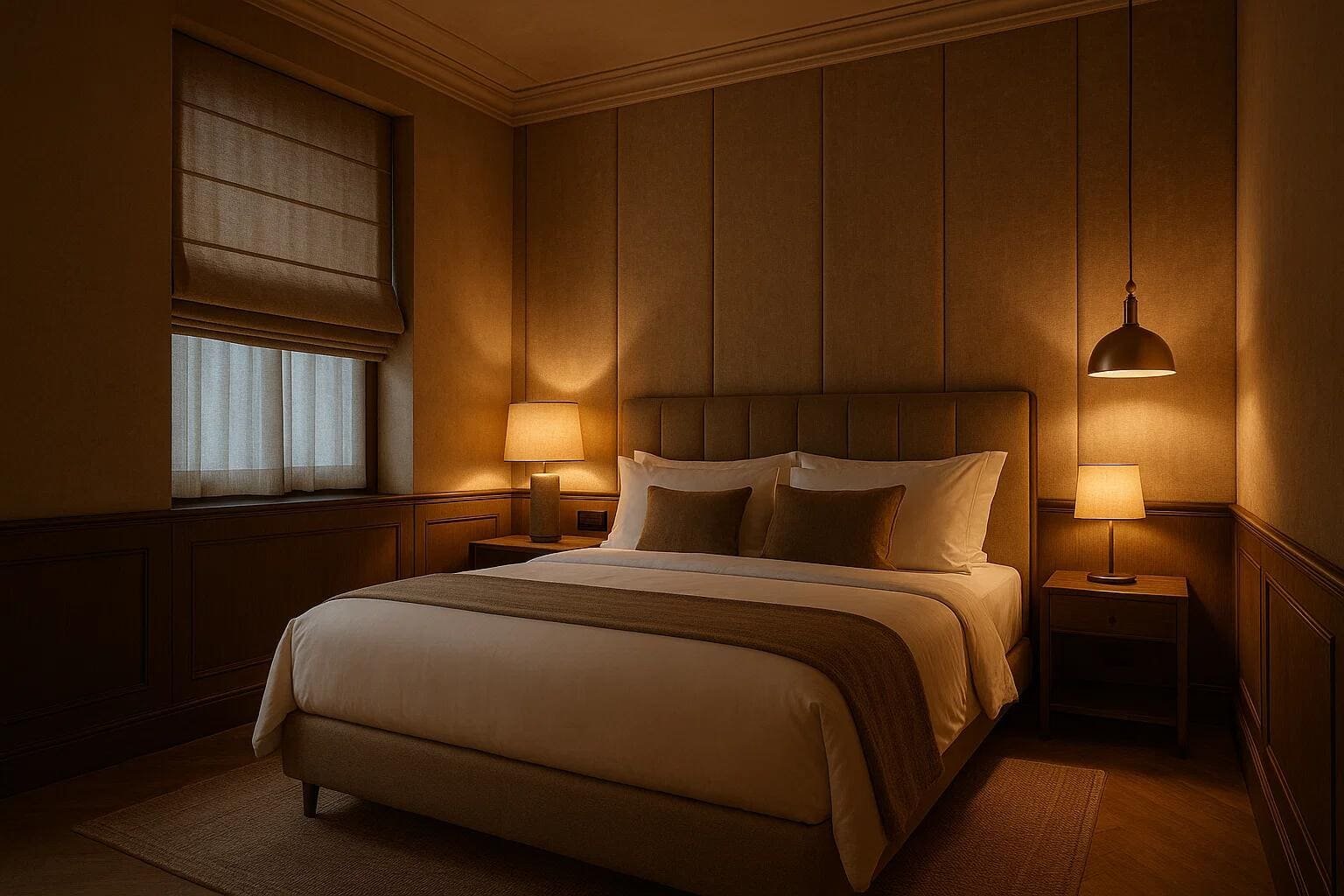
Here’s a practical guide based on the projects I work on:
- Bedrooms & Hotel Rooms: Always lean towards an outside mount. The improved light control is essential for creating a restful environment, which is a core need for these spaces.
- Living Rooms & Lounges: This is a style choice. An inside mount provides a clean, contemporary look. An outside mount can feel more grand and is better if you plan to layer it with curtains.
- Kitchens & Bathrooms: An inside mount is almost always the best choice here. It keeps the fabric contained within the frame, away from sinks, faucets, and countertops, and it leaves the windowsill free for plants or other items.
- Offices & Commercial Spaces: An inside mount is generally preferred for a sleek, professional aesthetic[^13] that doesn't interfere with the workspace. However, if the room is used for presentations and requires blackout conditions, an outside mount is necessary.
What Do I Need to Consider Before Installation?
You've made your decision on paper, but now it's time for the reality of the job site. A small measurement error or an unexpected obstruction can cause major delays.
For an inside mount, you must have accurate measurements[^14] of the window's interior width and, most importantly, sufficient unobstructed depth. For an outside mount, you just need enough flat surface area on the wall above and around the frame to attach the brackets securely.

This is where the real deciding factor comes in. Many people want an inside mount, but their windows won't allow it.
- For an Inside Mount: You need enough depth to mount the headrail. Our Roman blinds need a few inches of flat mounting surface. You also have to check for obstructions[^15] like cranks, handles, or alarm sensors that could block the blind's path. Measure the width at the top, middle, and bottom of the frame and use the narrowest dimension.
- For an Outside Mount: This option is much more forgiving. You just need to decide how much you want to overlap the window frame (I recommend at least 1.5-3 inches on each side and at the top). Check that you have enough flat wall space to screw in the brackets. An outside mount is the perfect solution for windows with very shallow frames, tilted frames, or any imperfections you want to hide.
Can I Combine Roman Blinds with Curtains?
The design calls for a richer, more layered window treatment. You want the functionality[^16] of a blind and the softness of drapes, but you're not sure how to make them work together.
Yes, combining Roman blinds with curtains is a classic and highly effective design strategy. The best approach is to use an inside-mounted Roman blind, which allows the curtains to hang perfectly over the top without interference.
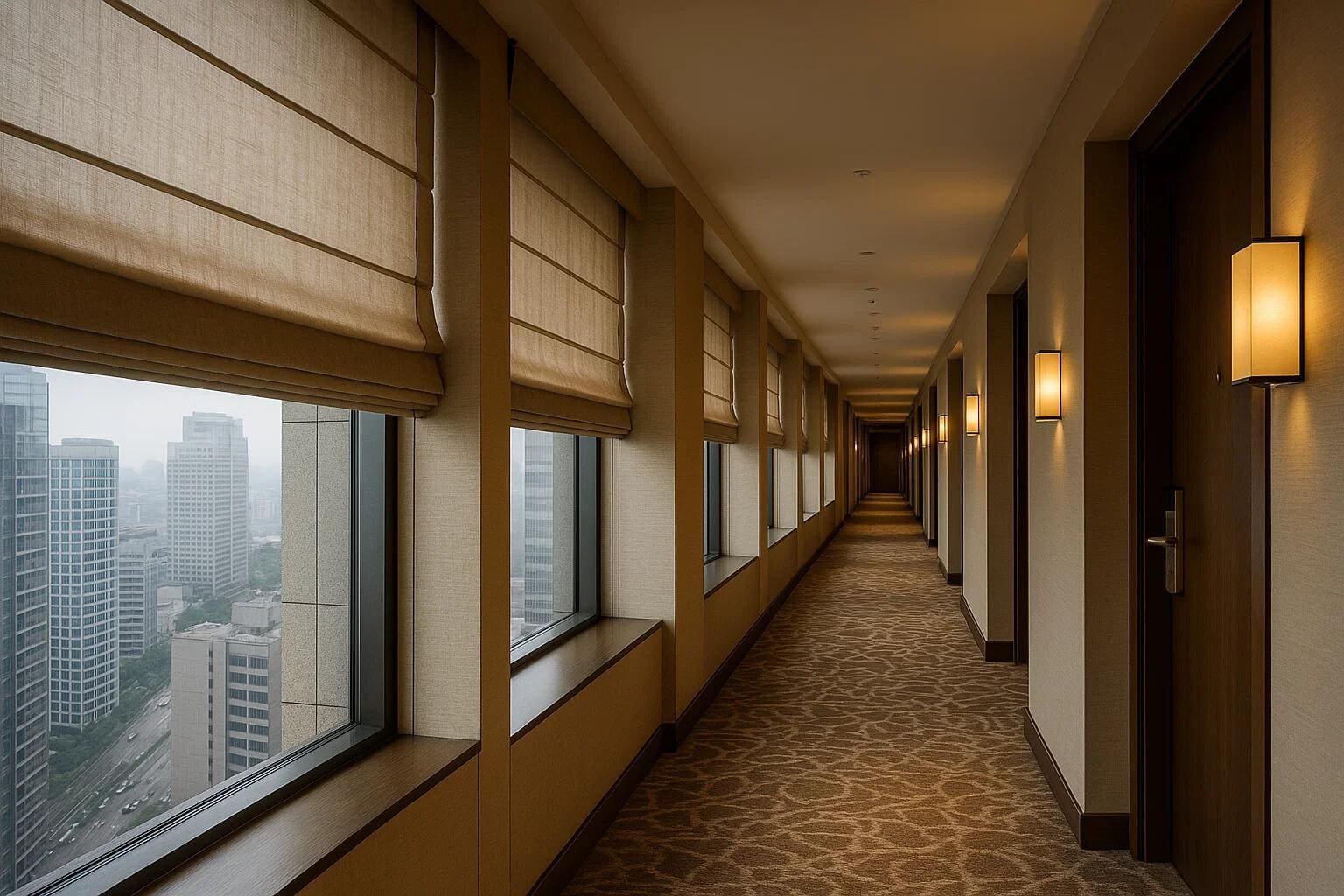
This combination gives you the best of both worlds. The Roman blind acts as the functional, light-filtering, or blackout layer, providing precise privacy and light control. The curtains then frame the window, adding color, pattern, texture, and an extra layer of insulation[^9]. Using an inside mount for the blind is key because it keeps the mechanism tucked neatly within the recess. This allows you to hang a curtain rod on the wall above the frame as you normally would. If you must use an outside-mounted blind, you will need to specify an extended curtain rod bracket that projects far enough from the wall to allow the curtains to clear the blind, which can sometimes look awkward.
Conclusion
The choice between an inside or outside mount is not just about looks. It’s a decision that balances your design vision with the practical limitations of the window frame itself to ensure both beauty and flawless performance.
---
[^1]: Explore the balance between aesthetics and functionality in your window treatment decisions.
[^2]: Learn about the critical differences in light control to make informed decisions for your window treatments.
[^3]: Explore how mounting choices can enhance or detract from the elegance of your window treatments.
[^4]: Get insights on how the condition and depth of your window frame influence your blind selection.
[^5]: Find out why measuring the depth is crucial for a successful inside mount installation.
[^6]: Explore the advantages of inside mounts for a clean, integrated look that enhances your window's architecture.
[^7]: Discover how outside mounts can improve light control and insulation, making them ideal for various spaces.
[^8]: Learn why inside mounts are ideal for kitchens to maintain a clean and functional space.
[^9]: Understand how different mounting styles affect insulation and energy efficiency in your home.
[^10]: Learn how to address light gaps for better privacy and light control in your spaces.
[^11]: Get expert advice on selecting Roman blinds that meet the unique needs of commercial spaces.
[^12]: Find out why outside mounts are often recommended for bedrooms to improve light control.
[^13]: Discover how the right Roman blind installation can enhance the professionalism of your workspace.
[^14]: Ensure a perfect fit by understanding the essential measurements needed for installation.
[^15]: Identify potential obstructions that could affect the installation of your Roman blinds.
[^16]: Explore the interplay between functionality and aesthetics to achieve the perfect window treatment.
Partner with VelaBlinds for Your Next Project
Smart window treatments shouldn't be complicated. After working with 500+ distributors and contractors worldwide, I've streamlined the process to get you quality products, competitive pricing, and reliable support - every time.
Why project professionals choose VelaBlinds:
- ✅ Fast, Accurate Quotes - Detailed specs and pricing within 24 hours
- ✅ Transparent Pricing - No hidden fees, volume discounts clearly outlined
- ✅ Quality Assurance - Direct partnerships with certified OEM manufacturers
- ✅ Project Support - Dedicated account manager from quote to delivery
Start your next project:
📧 Quick Quote: Send your requirements to info@velablinds.com
📱 Direct Contact: WhatsApp +86 137 2012 8317
🌐 Browse Solutions: https://velablinds.com/
📁 Product Resources: Access spec sheets, catalogs & project files
Paul Chen, Founder
"I built VelaBlinds to solve the real challenges I faced as a project buyer - long lead times, unclear specs, and unreliable suppliers. Let's discuss how we can power your projects with smarter blinds."
Serving distributors and contractors across North America, Europe, and Australia since 2018.

